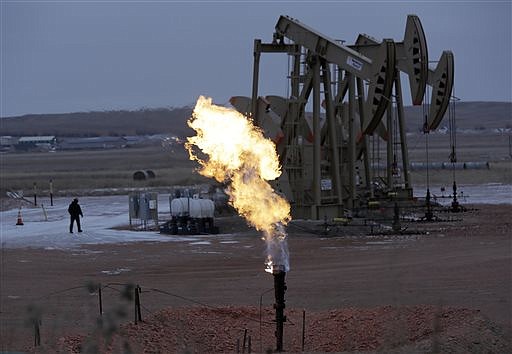Natural gas and gasoline get cheaper. ...
* $3.17 per 1,000 cubic feet - Current price of natural gas, down 29 percent from the rate a year ago* $2.11 - Average price per gallon of regular gasoline in Chattanooga, down 31 percent from a year ago while electricity gets more expensive....* $147.29 - Projected average household EPB bill in January,* up 0.9 percent from a year ago* $145.75 - Average EPB bill in December,* up 1.3 percent from a year ago* Based upon residential customer using 1,441 kilowatt hours of electricity each month.Sources: Tennessee Valley Authority, EPB, AAA Fuel Gauge Price Survey.
Natural gas, the most prevalent heating fuel in most of the country, is getting cheaper just as winter is arriving because of mild temperatures and plentiful supplies.
Gasoline prices, which have declined for 89 consecutive days, have fallen even more, declining by 31 percent from a year ago in Chattanooga, according to AAA's fuel gauge surveys.
But electricity which still heats most homes in the Tennessee Valley will be more expensive for homeowners in January as the cold weather boosts power demand and boosts TVA's monthly fuel cost adjustment. Although fuel cost fees are below where they were a couple of years ago, the typical EPB residential customer will still pay $1.38 more for electricity next month than what he or she paid in January 2014 and will pay $1.54 more than what the household bill was this month.
"Colder than normal weather in November contributed to higher than expected sales last month, which is a factor in the increased fuel cost from December," TVA spokesman Scott Brooks said.
A 2 percent increase in TVA's base rates in each of the past two years also is offsetting some of the cheaper fuel costs. But Brooks said next month's fuel cost fee is still 9 percent below the average for January over the past three years.
"Electricity sales for January are expected to be lower than average, in part due to expected milder than average weather," he said. "Natural gas prices are also expected to be about 15 percent lower than the three-year average."
The price of natural gas has dropped 29 percent in a month, to $3.17 per 1,000 cubic feet from nearly $4.50 in late November. That's a steep drop even for a fuel notorious for volatile price swings.
The lower prices are expected to linger and should eventually also reduce electricity prices in the coming months. Natural gas is used by half of the nation's households for heating and generates 26 percent of the nation's electricity. TVA, the largest government-owned utility, gets less than 20 percent of its power from natural gas generation and suppliers, although that share is growing.
Natural gas often rises as winter weather approaches, and a frigid November sent the price higher. But December warmed up, and temperatures for the rest of the winter are expected to be close to normal.
Bob Brackett, an analyst at Bernstein Research, wrote in a recent note to investors that he expects natural gas to average "in the low 3's" into the spring, and a warm winter could push the price below $3 per 1,000 cubic feet.
Last year at this time natural gas was near $4.50 and it reached as high as $6.15 in February after unusually cold weather gripped the eastern half of the country and stuck around for weeks. Prices in some locations averaged double or triple that amount as pipelines struggled to carry all the gas that was needed.
Because of the way natural gas and electric utilities are regulated, customers won't likely see the recent drop reflected in their bills right away. Many will instead see higher prices as a result of last year's price spike.
But the lower market prices could at least slow the rise in retail prices and perhaps reverse it if the low prices last.
Conditions look good for low prices throughout the spring. After that, though, prices could head back up, analysts say.
One-fifth of the nation's natural gas production is from gas found when drilling for oil, so-called "associated gas." A drop in the price of oil is forcing drillers to cut back, and that may slow the growth in production of associated gas.
Also, in April of next year an Environmental Protection Agency rule governing emissions of mercury and other toxic chemicals goes into effect. That will force electric utilities to reduce their use of coal, the chief source of those emissions, and turn instead to natural gas.
And later next year the first of several new liquefied natural gas export terminals are expected to start up, further increasing natural gas demand.
Brackett expects natural gas prices to increase after the second quarter and average $4 per 1,000 cubic feet for the year.
Tom Pugh, an analyst at Capital Economics, thinks the gas price could reach $6 by the end of 2016 as power generation and exports boost demand.
Contact Dave Flessner at dflessner@timesfreepress.com or at 757-6340.
